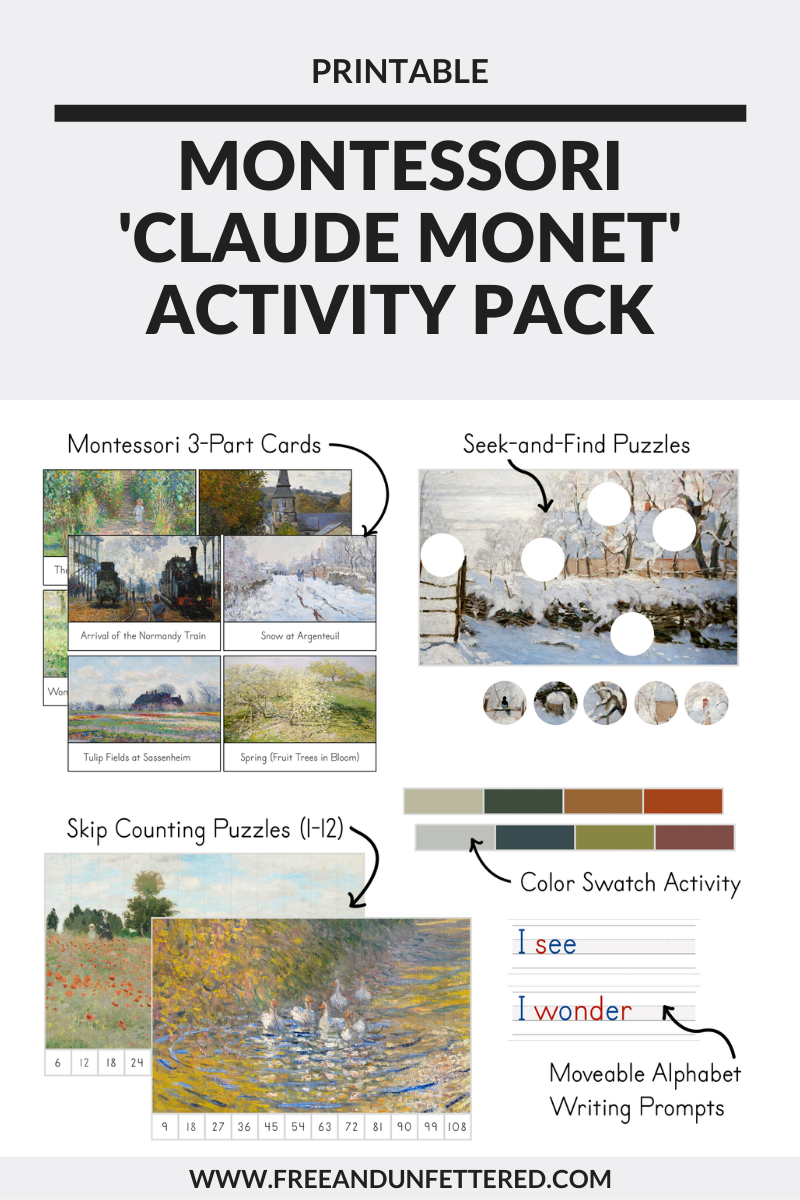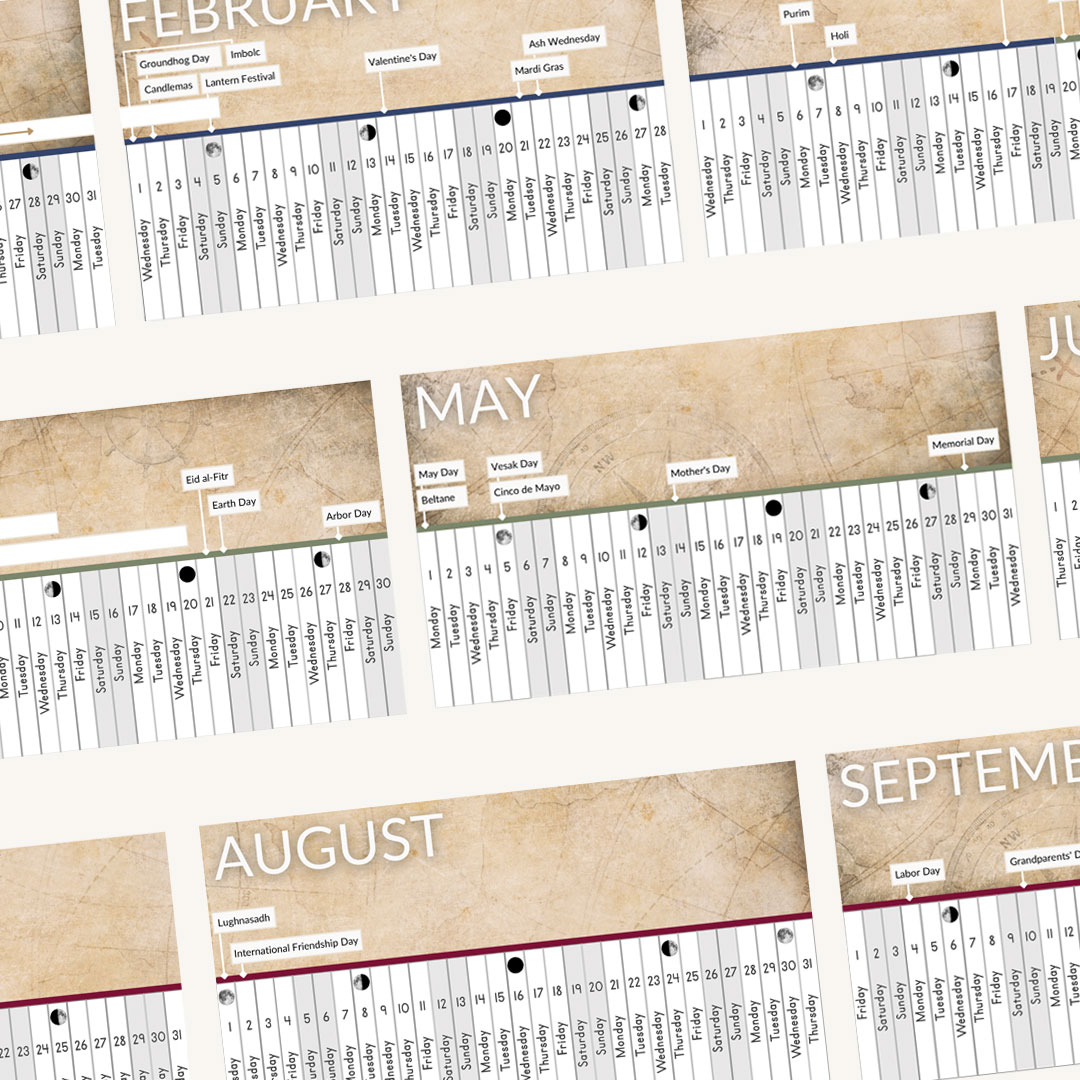Linear Calendar: Free Printable
A linear calendar is one of the absolute best ways to introduce time to preschoolers and elementary students. If you haven’t tried one yet, now’s the time! Best of all, this year you may choose from three different linear calendar versions!
What is a Linear Calendar?
A linear calendar visually displays the entire year in one continuous line. This helps make the passage of time more concrete for young children. It allows them to count down to when special events, holidays, and birthdays are occurring.
Why a Linear Calendar is Perfect for Preschoolers and Elementary Kids
Once set up, a linear calendar is essentially a timeline. It serves as an important visual learning aid for preschoolers and elementary kids. On a linear calendar, the days of the week and the months of the year are arranged sequentially, with the dates clearly marked.
Time is a very abstract concept for young children, making it difficult to grasp. Because a linear calendar offers an up-close, sequential view of the year, it establishes a clear framework for when dates and important events are occurring. It gives kids a point of reference. They can clearly see the day’s date, determine which day is yesterday, which day is tomorrow, how many days left until the weekend, how many months until their birthday, etc.
How to Set Up a Linear Calendar
First, print your chosen linear calendar. I like to laminate ours for extra durability. Since the linear calendar is designed to mimic a timeline, you will need a longer stretch of wall to display it. In the past we’ve placed ours in a hallway and this year it will be set up in our homeschool area.
I recommend making it easily accessible to your children by placing it at eye level. Ideally, you want to encourage your children to take responsibility over calendar time. Ensuring that it’s within easy reach enables them to keep track of each day’s date and visually see when events are occurring throughout the year.
TIPS
- Display the linear calendar in an area that is easily accessible to your children.
- Use stickers to mark special days, such a holidays, birthdays, events, etc.
- Use a clothespin or paperclip to keep track of the current day.
How to Hang a Linear Calendar
We use Command poster strips to hang our linear calendar on the wall. Simply print the calendar, cut it out, laminate if desired, and then attach a small poster strip to the top corners of each month.
How to Teach a Linear Calendar
Using a linear calendar helps you effortlessly teach many important concepts related to both time and calendars, including:
- The Days of the Week
- The Months of the Year
- The Four Seasons
- Moon Phases
- Holidays
More Learning Opportunities:
Global Studies:
The new “Holidays Around the World” linear calendar encourages you to learn about all the different holidays celebrated around the world. It’s a great way to incorporate cultural studies into your daily routine.
Artist Study:
Our “Claude Monet” linear calendar helps introduce children to the artwork of Claude Monet. Each painting has been selected to represent the seasons as well. Pair this linear calendar with the “Claude Monet Activity Bundle” for even more hands-on learning opportunities!
Nature Study:
Study a new constellation each month of the year with the “Constellations” linear calendar. In addition to observing the constellation in the sky, you can also read constellation myths from around the world with Star Stories: Constellation Tales From Around the World by Anita Ganeri.
Linear calendars are also a great way to practice important mathematical skills, too! Let’s face it, math is so much more fun when it’s meaningful to kids. Here are a few suggested math prompts that can be incorporated into your calendar time throughout the year:
- How many days are left until the weekend?
- How many days are there in this month? How many days were in last month? What about next month? Which months have an even number of days? Which months have an odd number of days?
- How many days are there until your next birthday? What day will your birthday fall on this year?
- What date does the full moon occur this month? What about the new moon?
When you implement a linear calendar in your home or classroom, there really are so many learning opportunities for math, including counting, addition, recognizing even/odd, number recognition, and more!
Download a 2025 Linear Calendar
I’m excited to announce a new addition to this year’s selection of linear calendars. Best of all, you can download it for free! In celebration of our new “Around the World” curriculum, I created a special “Holidays Around the World” linear calendar for 2025.
As mentioned above, the other two linear calendar options available this year include the “Claude Monet” linear calendar and the “Constellations” linear calendar.
The 2025 “Holidays Around the World” Montessori Linear Calendar
The Global Explorers Club’s 2025 “Holidays Around the World” Linear Calendar can be used to supplement Montessori continent studies or any other “Around the World” curriculum.
It’s a great way to pique a child’s interest in global holidays and can serve as a starting point for child-led research projects, too. Of course, learning about different holidays around the world together as a family is lots of fun as well!
The 2025 “Holidays Around the World” Linear Calendar features a seasons indicator bar, the moon phases, and the major global holidays. If you notice I’ve missed one, I’d love to hear about it!

You can download the 2025 “Holidays Around the World” linear calendar for free by subscribing to the Global Explorers Club newsletter below.
the global explorers club
Let’s Discover the World Together
The 2025 “Claude Monet” Montessori Linear Calendar
The 2025 ‘Claude Monet’ Montessori Linear Calendar includes a featured artwork each month, a seasons indicator, along with the moon phases throughout the year.
You will also receive a perpetual calendar featuring all 12 Claude Monet paintings that can be incorporated into a year-long art study project with your children.
2025 linear calendar
Claude Monet
Gingerbread cake lollipop bear claw dessert lollipop. Carrot cake gingerbread oat cake croissant cookie topping. Caramels jelly beans gingerbread tootsie roll powder. Powder cotton candy bear claw marzipan gingerbread jelly beans pudding gingerbread halvah.
If you’d like some more hands-on educational activities to introduce children to the artwork of Claude Monet, check out our Montessori-inspired activity bundle that includes 3-part cards, seek-and-find puzzles, a color matching work, skip counting puzzles, and moveable alphabet writing prompts.

The 2025 “Constellations” Montessori Linear Calendar
The 2025 ‘Constellations’ Montessori Linear Calendar includes a featured constellation each month, a seasons indicator, along with the moon phases throughout the year.
You will also receive a perpetual calendar featuring all 12 constellations designed to be studied and observed throughout the year with your children. This calendar is specifically designed for the Northern Hemisphere.
2025 linear calendar
Constellations
Gingerbread cake lollipop bear claw dessert lollipop. Carrot cake gingerbread oat cake croissant cookie topping. Caramels jelly beans gingerbread tootsie roll powder. Powder cotton candy bear claw marzipan gingerbread jelly beans pudding gingerbread halvah.
What If I Have Limited Wall Space?
Don’t worry, you can still make use of a linear calendar for your preschoolers and elementary kids!
First, cut and laminate each month. Then, simply attach each month to a ring binder clip.
Children can then flip through the calendar months as needed. Plus, they can practice laying the months out in order on the floor.
This method is a great option if you’re wanting to provide each child with their own individual calendar rather than a family and/or classroom calendar.
How to Incorporate Nature Study with Calendar Time, Too
Linear calendars offer a fun, hands-on way for kids to learn about the passage of time.
If you’d like to add a little bit of nature study to your calendar time as well, please consider using our Weather Observation Tree. For each day of the year, children can record the day’s temperature, weather pattern, or whatever else event they’d like to track.
Click here to read all about how we use our Waldorf-inspired weather tree.








